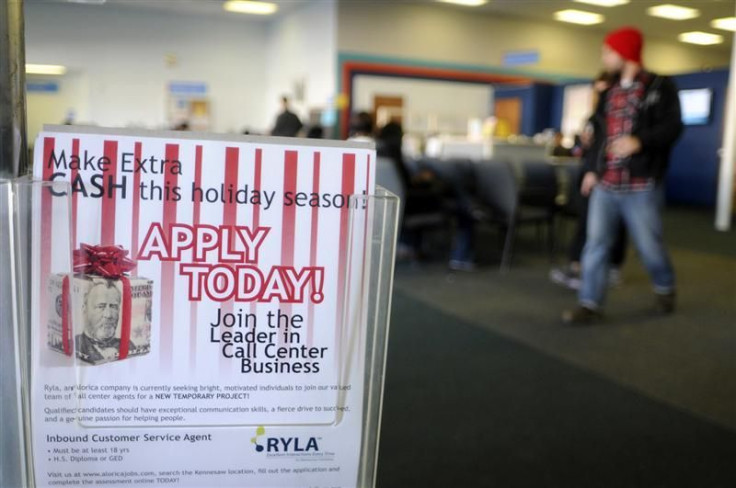Jobless Rate Drops to 8.6 Percent, Hiring Picks Up

(REUTERS) - Employment growth picked up speed in November and the jobless rate dropped to a 2-1/2 year low of 8.6 percent, further evidence the economic recovery was gaining momentum.
Nonfarm payrolls increased 120,000 last month, the Labor Department said on Friday, in line with economists' expectations for a gain of 122,000.
The relative strength of the report was also bolstered by revisions to the employment counts for September and October to show 72,000 more jobs created than previously reported.
While part of the decline in the unemployment rate from 9.0 percent in October was due to people leaving the labor force, the household survey from which the jobless rate is derived also showed solid gains in employment
The unemployment rate had been expected to hold at 9 percent.
The labor market is gradually healing. It's a glacial pace, but we are taking small steps in the right direction, said Ryan Sweet, a senior economist at Moody's Analytics in West Chester, Pennsylvania. He made the comments before the release of the report.
The report is unlikely to take much pressure off President Barack Obama, whose economic stewardship will face the judgment of voters next November. The outlook for the U.S. economy is also being threatened by Europe's deepening financial crisis.
The report will not prove decisive for the U.S. Federal Reserve, which is weighing whether the recovery needs further monetary support.
Data ranging from manufacturing to retail sales suggest the growth pace could top 3 percent in the fourth quarter, in contrast to China, where growth is cooling. Growth in much of Europe has slowed down.
While the economy's growth pace appears to have accelerated from the third quarter's 2 percent annual rate, it is still insufficient to cut deeply into the high unemployment rate, and Europe's festering debt crisis poses a big threat.
At the same time, U.S. fiscal policy is set to tighten in the new year, even if lawmakers extend a payroll tax cut.
Taken together, some analysts believe the headwinds facing the U.S. economy will lead the Fed to ease monetary policy further by buying more bonds.
We still have a very long way to go. I would favor the Fed going for a third round of quantitative easing, Sweet said. It's the only powerful tool left, even though it's losing some of its bang.
Analysts say the economy needs to create at least 125,000 jobs every month just to keep the unemployment rate steady.
PRIVATE SECTOR SHOULDERS BURDEN
All the increase in nonfarm payrolls in November again came from the private sector, where employment rose 140,000 after increasing 117,000 in October.
Government employment fell by 20,000. Public payrolls have dropped in 10 of the past 11 months as state and local governments have tightened their belts.
Outside of government, job gains were almost across the board, with retail surging 49,800.
Elsewhere, construction payrolls fell 12,000 after losing 15,000 jobs in October. Factory jobs edged up 2,000, with most of the gains coming from automakers.
Health care and social assistance hiring rose 18,700 after adding 30,300 job in October. Temporary hiring -- seen as a harbinger for future hiring - increased 22,300 after adding 15,800 jobs last month.
The average work week was unchanged at 34.3 hours, with hourly earnings falling two cents.
(Reporting by Lucia Mutikani; Editing by Andrea Ricci)
© Copyright Thomson Reuters 2024. All rights reserved.





















